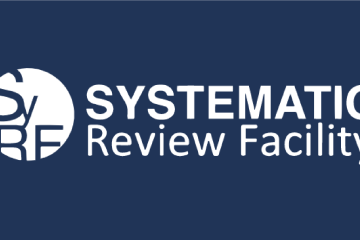Infrastructure grant
SyRF: the CAMARADES/NC3Rs in vivo systematic review and meta-analysis facility

At a glance
Completed
Award date
October 2013 - September 2018
Grant amount
£504,931
Principal investigator
Professor Malcolm Macleod
Co-investigator(s)
Institute
University of Edinburgh
R
- Reduction
Contents
Overview
Aims
This infrastructure award will maximise the 3Rs potential of undertaking systematic reviews and meta-analyses of animal research.
Background
Systematic reviews and meta-analyses are common practice in clinical research. They remain relatively under-utilised in animal research although recent reviews have illustrated their potential 3Rs benefits for example, supporting a reduction in animal numbers, determining whether high severity tests or multiple tests are necessary, and avoiding the use of uninformative models.
Research details and methods
The award will support the development of online resources and hands-on support facilitating the wider use of systematic reviews and meta-analyses by researchers.
Impacts
- Resource: SyRF website
- NC3Rs Resource: Experimental design hub
Publications
- Jue TR et al. (2018). A systematic review and meta-analysis of topoisomerase inhibition in pre-clinical glioma models. Oncotarget 9(13):11387-11401. doi: 10.18632/oncotarget.24334
- Akl EA et al. (2017). Living systematic reviews: 4. Living guideline recommendations. Journal of Clinical Epidemiology 91:47-53. doi: 10.1016/j.jclinepi.2017.08.009
- Archer DP et al. (2017). Anesthetic Neuroprotection in Experimental Stroke in Rodents: A Systematic Review and Meta-analysis. Anesthesiology 126(4):653-65. doi: 10.1097/ALN.0000000000001534
- Elliott JH et al. (2017). Living systematic review: 1. Introduction-the why, what, when, and how. Journal of Clinical Epidemiology 91:23-30. doi: 10.1016/j.jclinepi.2017.08.010
- Flynn LMC et al. (2017). Alpha Calcitonin Gene-Related Peptide Increases Cerebral Vessel Diameter in Animal Models of Subarachnoid Hemorrhage: A Systematic Review and Meta-analysis. Frontiers in Neurology 8:357. doi: 10.3389/fneur.2017.00357
- Sadigh-Eteghad S et al. (2017). D-galactose-induced brain ageing model: A systematic review and meta-analysis on cognitive outcomes and oxidative stress indices. PloS One 12(8):e0184122. doi: 10.1371/journal.pone.0184122
- Simmonds M et al. (2017). Living systematic reviews: 3. Statistical methods for updating meta-analyses. Journal of Clinical Epidemiology 91:38-46. doi: 10.1016/j.jclinepi.2017.08.008
- Thomas J et al. (2017). Living systematic reviews: 2. Combining human and machine effort. Journal of Clinical Epidemiology 91:31-37. doi: 10.1016/j.jclinepi.2017.08.011
- Lalu MM et al. (2016). Evaluating mesenchymal stem cell therapy for sepsis with preclinical meta-analyses prior to initiating a first-in-human trial. eLife 5 doi: 10.7554/eLife.17850
- van Hout GP et al. (2016). Translational failure of anti-inflammatory compounds for myocardial infarction: a meta-analysis of large animal models. Cardiovascular Research 109(2):240-8. doi: 10.1093/cvr/cvv239
- Zwetsloot PP et al. (2016). Cardiac Stem Cell Treatment in Myocardial Infarction: A Systematic Review and Meta-Analysis of Preclinical Studies. Circulation Research 118(8):1223-32. doi: 10.1161/CIRCRESAHA.115.307676
- Currie GL, Macleod MR (2015). Increasing value and reducing waste in animal models of rheumatological disease. International Journal of Rheumatic Diseases 18(5):485-7. doi: 10.1111/1756-185X.12703
- Jansen Of Lorkeers SJ et al. (2015). Similar effect of autologous and allogeneic cell therapy for ischemic heart disease: systematic review and meta-analysis of large animal studies. Circulation Research 116(1):80-6. doi: 10.1161/CIRCRESAHA.116.304872
- Laban KG et al. (2015). Effect of endothelin receptor antagonists on clinically relevant outcomes after experimental subarachnoid hemorrhage: a systematic review and meta-analysis. Journal of Cerebral Blood Flow and Metabolism 35(7):1085-9. doi: 10.1038/jcbfm.2015.89
- Macleod M (2015). Prof Benchie and Dr Athena-A modern tragedy. Evidence-based Preclinical Medicine 2(1):16-19. doi: 10.1002/ebm2.8
- Macleod MR et al. (2015). Risk of Bias in Reports of In Vivo Research: A Focus for Improvement. PLOS Biology 13(10):e1002273. doi: 10.1371/journal.pbio.1002273
- Milidonis X et al. (2015). Magnetic resonance imaging in experimental stroke and comparison with histology: systematic review and meta-analysis. Stroke 46(3):843-51. doi: 10.1161/STROKEAHA.114.007560
- Vesterinen HM et al. (2015). Drug repurposing: a systematic approach to evaluate candidate oral neuroprotective interventions for secondary progressive multiple sclerosis. PLOS ONE 10(4):e0117705. doi: 10.1371/journal.pone.0117705
- Egan KJ et al. (2014). Exercise reduces infarct volume and facilitates neurobehavioral recovery: results from a systematic review and meta-analysis of exercise in experimental models of focal ischemia. Neurorehabilitation and Neural Repair 28(8):800-12. doi: 10.1177/1545968314521694
- Hirst TC et al. (2014). A systematic review and meta-analysis of gene therapy in animal models of cerebral glioma: why did promise not translate to human therapy? Evidence-based Preclinical Medicine 1(1):21-33. doi: 10.1002/ebm2.6
- Howells DW et al. (2014). Bringing rigour to translational medicine. Nature Reviews Neurology 10(1):37-43. doi: 10.1038/nrneurol.2013.232
- Ioannidis JP et al. (2014). Increasing value and reducing waste in research design, conduct, and analysis. Lancet 383(9912):166-75. doi: 10.1016/S0140-6736(13)62227-8
- Lalu MM et al. (2014). Efficacy and safety of mesenchymal stromal cells in preclinical models of acute lung injury: a systematic review protocol. Systematic Reviews 3:48. doi: 10.1186/2046-4053-3-48
- Macleod MR (2014). Preclinical research: Design animal studies better. Nature 510(7503):35. doi: 10.1038/510035a
- McCann SK et al. (2014). Efficacy of antidepressants in animal models of ischemic stroke: a systematic review and meta-analysis. Stroke 45(10):3055-63. doi: 10.1161/STROKEAHA.114.006304
- Pedder H et al. (2014). Systematic review and meta-analysis of interventions tested in animal models of lacunar stroke. Stroke 45(2):563-70. doi: 10.1161/STROKEAHA.113.003128
- Sena ES et al. (2014). Systematic reviews and meta-analysis of preclinical studies: why perform them and how to appraise them critically. Journal of Cerebral Blood Flow and Metabolism 34(5):737-42. doi: 10.1038/jcbfm.2014.28
- Vesterinen HM et al. (2014). Meta-analysis of data from animal studies: a practical guide. Journal of Neuroscience Methods 221:92-102. doi: 10.1016/j.jneumeth.2013.09.010
- Watzlawick R et al. (2014). Effect and reporting bias of RhoA/ROCK-blockade intervention on locomotor recovery after spinal cord injury: a systematic review and meta-analysis. JAMA Neurology 71(1):91-9. doi: 10.1001/jamaneurol.2013.4684
- Wu S et al. (2014). Edaravone improves functional and structural outcomes in animal models of focal cerebral ischemia: a systematic review. International Journal of Stroke 9(1):101-6. doi: 10.1111/ijs.12163
- Batchelor PE et al. (2013). Meta-analysis of pre-clinical studies of early decompression in acute spinal cord injury: a battle of time and pressure. PLOS ONE 8(8):e72659. doi: 10.1371/journal.pone.0072659
- Batchelor PE et al. (2013). Systematic review and meta-analysis of therapeutic hypothermia in animal models of spinal cord injury. PLOS ONE 8(8):e71317. doi: 10.1371/journal.pone.0071317
